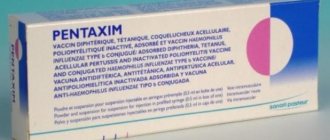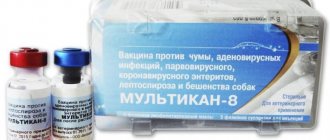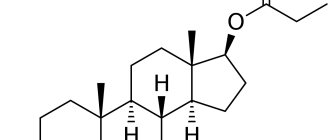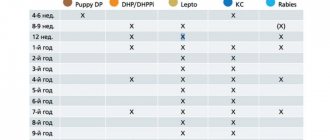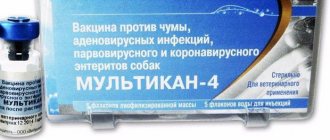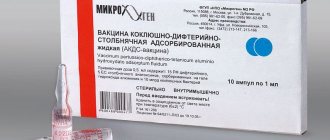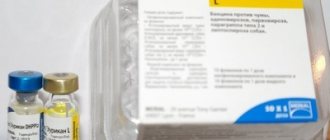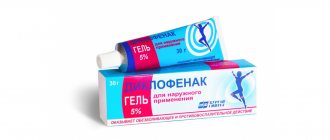The carriers of a terrible infection that has destroyed entire cities in the past are rodents. We are talking about the plague, outbreaks of which are still recorded in countries in Africa, South and North America. Relatively recently, in the 90s of the 20th century, an epidemic of this infection was registered in India, from which more than 12,000 people died. The surprising thing is that there is no downward trend in the number of infected people and thousands of infected people are recorded in this country every year. Due to the high risk of death, planned prevention of the disease is necessary for the population living in countries with a threatening risk of infection. The most effective method is considered to be vaccination against plague, the features of which and indications for its administration will be discussed in this article.
How does infection occur?
Plague is a natural focal pathology of an infectious nature. The disease always occurs in a very severe form and sometimes causes death. The danger is that the disease is extremely contagious, so the epidemic process develops quite quickly.
Rodents are recognized as the main source of infection, but a sick person can also serve as a secondary cause. In this case, a pulmonary form of the disease develops. You can catch the disease very simply - through the bites of the rodents themselves or the fleas living on them, if they themselves have the disease. In this case, the pathology develops quite quickly. The incubation period lasts no more than six days, and the disease begins with a sudden deterioration in health.

Typical manifestations of the disease
The onset of infection is characterized by the appearance of severe chills and severe intoxication in a person. The patient complains of severe weakness, his gait becomes unsteady and his temperature rises to critical levels. The main symptoms of plague include:
- enlarged lymph nodes;
- sharp muscle pain;
- fever;
- increased heart rate and a sharp drop in blood pressure;
- weakness and weakness;
- loss of consciousness or confusion.
Patients are subject to mandatory hospitalization. Doctors base their choice of treatment tactics on the form of the pathology. Usually a course of antibiotic therapy is used, which lasts at least 10 days. The rest of the treatment is aimed at eliminating symptoms, because there are no specific drugs to cure the disease, and the only way to protect yourself from the disease is to vaccinate a person against the plague.
What kind of disease is bubonic plague?
The plague bacillus causes three different types of plague: bubonic, septicemic and pneumonic. Bubonic plague is spread by infected fleas living on tarbagans, or Mongolian marmots. In addition, you can catch the infection by eating raw meat or cutting it.
The incubation period is usually 2-6 days. If pneumonia develops during the plague, transmission of the disease can also occur by airborne droplets.
Currently, the disease is treated with antibiotics. With timely treatment in modern conditions, the mortality rate from bubonic plague is no more than 10%; with other forms of plague, mortality depends on the speed of initiation of treatment.
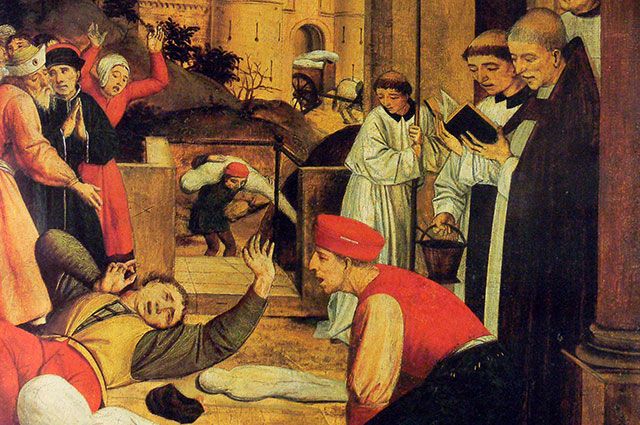
A year is not a period. How long did the worst epidemics in history last? More details
Vaccine creator
Initially, the vaccine was created from dead plague bacilli that were destroyed by the high temperature of the human body. Many people are interested in who invented the plague vaccine. For the first time, a liquid administered to protect against the bubonic variety of the disease was invented by Vladimir Khavkin. But at first she was lifeless.
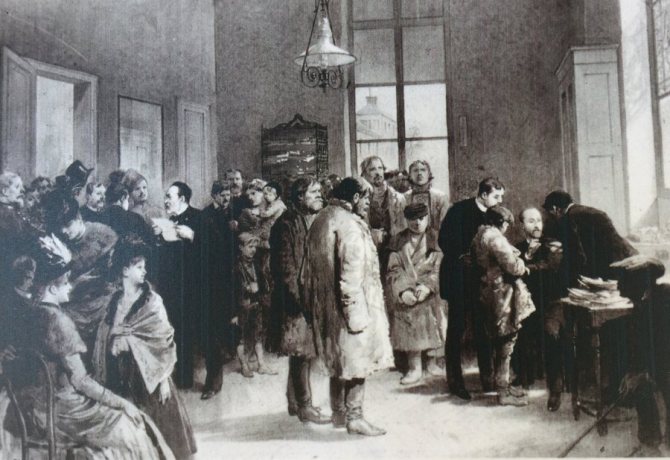
Modern medicine recognizes that the most effective preventive measure is a vaccine created from living but weakened strains of plague, when special bacteriophages are used. It was this kind of plague vaccination that was invented back in 1934 by Pokrovskaya Magdalene, who was the first to test its effect on her own body.
Features of the plague stick
It is assumed that the ancestor of the plague bacillus is pseudotuberculosis - Yersinia pseudotuberculosis, which lives in the soil and causes harmless gastrointestinal diseases. Scientists made numerous comparisons of these bacteria and learned that about 10 thousand years ago a mutation occurred, as a result of which new genes arose in the pseudotuberculosis bacillus, allowing it to penetrate the human respiratory tract and infect the lungs, as well as rapidly penetrate all tissues of the body and multiply in them. This is how the plague wand was formed.
This bacterium mutated again at the end of the 2nd or beginning of the 3rd millennium BC, and then the bubonic form of plague appeared. Scientists distinguish three historical varieties of the plague pathogen:
- antiqua - caused the Plague of Justinian (circa 541–683 AD);
- medievalis - caused the Black Death in the 14th century;
- orientalis - caused the Third Pandemic (ca. 1855–1912), as well as modern cases of infection.
Several hundred strains of the plague bacillus are now known, but all infected people receive effective treatment.
The plague bacillus can survive in sputum from the lungs for up to 10 days. It lives on various surfaces for weeks, and on the corpses of the dead - even for months. It tolerates low temperatures well, but dies when boiled in a matter of minutes. When heated to 60ºС, it will die in an hour. It is easily killed by disinfectants.
Modern drug
Currently, only vaccination is recognized as an effective measure of protection against this dangerous disease. The plague vaccine is a homogeneous white powder that is packaged in glass injection bottles. The composition of the product is as follows:
- The active substance is microbial plague cells that are alive but weakened.
- The following are added as a stabilizer: dextrin, lactose, ascorbic acid, thiourea.
- Next comes a special filler consisting of vanillin, cocoa powder, glucose, starch and menthol.
Microbial cells are exposed to chemical action, after which they completely lose their virulent properties (it is no longer possible to get sick from them). At the same time, pathogenic organisms are quite capable of multiplying in internal organs and lymph nodes.
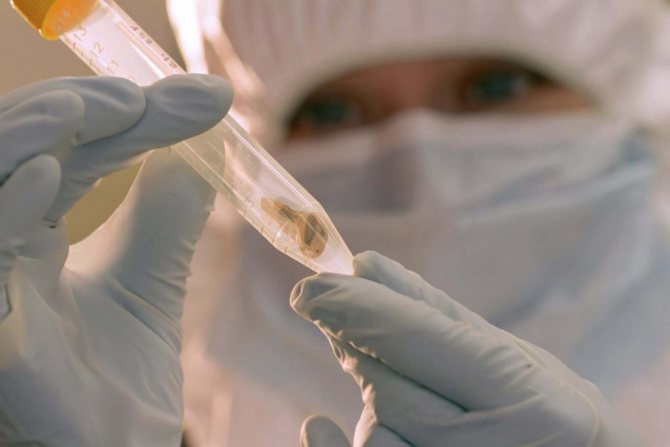
What happens after vaccination
When a person is vaccinated against plague, microbial cells begin their active action. There is no clinical picture characteristic of the disease, but the human immune system begins to work actively, creating individual protection against the introduced strains.
If there is a repeated encounter with a similar pathogen, then the body already has a sufficient supply of antibodies that can quickly destroy the infection. However, it must be remembered that the plague vaccine can only last about a year for a person.
The name of the drug on each package is given in both Latin and Russian and sounds like “Live dry plague vaccine.” Usually supplied in cardboard packages containing 10 bottles of powdered contents. They are completely sterile and must be opened immediately before the injection.
When do you get vaccinated against plague?
Vaccination is necessary to prevent the disease. The injection can be given to adults and children starting from two years of age. Persons for whom the injection is indicated are as follows:
- Veterinarians and people who are involved in catching rodents, transporting them, and slaughtering them.
- Laboratory workers who have contact with live plague cultures or infected animals. And scientists who conduct research on contaminated materials should also be vaccinated.
- Employees of expeditionary services involved in geological excavations or pasture reclamation activities.
- All people located in the area where the disease is spreading.
All health workers who travel to epidemic areas and treat infected people are also vaccinated against the plague.

How is vaccination done?
The vaccine can be administered in several ways. There are four of them in total, which we describe below:
- Cutaneous. Drops of liquid are applied to the forearm area, the total dose is 0.15 ml. Next, cross-shaped incisions are made in these places and the drug is actively rubbed in.
- Subcutaneous. Administered by injection under the lower angle of the scapula. A dosage of 0.5 ml is used.
- Subcutaneous without needle. The vaccine is administered with a special sterilized injector into the deltoid muscle area. The standard dosage is 0.5 ml, but the doctor can base it on the patient’s age and reduce or increase it.
- Intradermal. It is injected with a needle and 0.1 ml of the product is used.
The method for administering the vaccine is selected by the doctor, depending on the conditions, condition of the patient and his age. But it is important to always take into account possible contraindications, which are quite extensive.
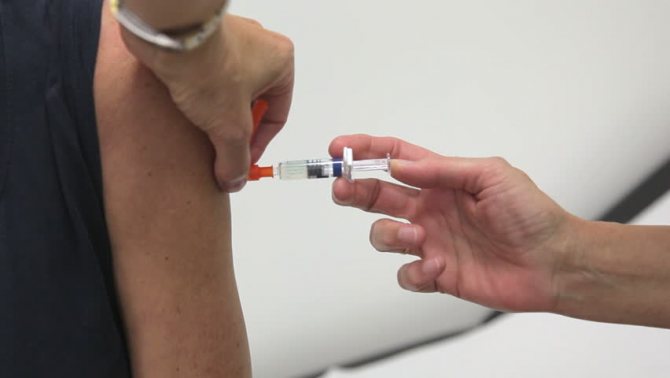
FS.3.3.1.0022.15 Live plague vaccine
MINISTRY OF HEALTH OF THE RUSSIAN FEDERATION
PHARMACOPOEIAL ARTICLE
Live plague vaccine FS.3.3.1.0022.15
In replacement of GF X, Art. 713
FS 42-3877-99
This pharmacopoeial article applies to the live plague vaccine, lyophilisate for the preparation of a suspension for injection, cutaneous scarification application and inhalation, which is a live culture of the vaccine strain of the plague microbe Yersinia pestis EV line NIIEG, dried by lyophilization in a stabilizing medium.
The vaccine is intended for the prevention of plague and causes the development of specific immunity lasting up to 1 year.
PRODUCTION
The vaccine strain of Y. pestis EV line NIIEG must have typical morphological, cultural and biochemical properties; contain plasmids pFra, pesticinogenicity (pPst) and calcium dependence (pCad) with molecular weights of 60, 6 and 47 MDa, respectively; should not cause death in guinea pigs and loss of their weight when administered at a dose of 15 109 microbial cells (mc). The immunogenicity of the strain in terms of ED50 when administered subcutaneously should not exceed 103 mc for guinea pigs, and 104 mc for white mice.
Before preparing the next series of the vaccine strain Y. pestis EV line NIIEG, it is passed through the body of a guinea pig, followed by the selection of typical colonies grown on Petri dishes with Hottinger agar from cultures of the spleen and regional lymph nodes.
The vaccine manufacturing technology involves obtaining seed cultures of Y. pestis EV line NIIEG I, II and III generations; the process of accumulating biomass grown to prepare a vaccine suspension with the required concentration; subsequent bottling, freezing, freeze-drying, sealing and packaging of the drug. At the stages of preparing seed cultures, the pH, concentration of microbial cells and the absence of foreign microflora are determined.
Depending on the vaccine preparation technology, the production process uses excipients that are approved for use in the production of immunobiological drugs: sucrose, gelatin, thiourea, dextrin, ascorbic acid.
TESTS
Description
Porous mass of grayish-white color.
Authenticity
The vaccine must contain a pure culture of the vaccine strain Y. pestis EV line NIIEG. The determination is carried out using the immunofluorescent method using diagnostic fluorescent plague immunoglobulins, in accordance with the instructions for use. In smears from the preparation, microbial cells should glow bright green along the periphery.
Dissolution time
Should completely dissolve within 3 minutes when adding 1.8 ml of 0.9% sodium chloride solution.
The reconstituted drug is a homogeneous suspension of grayish-white color without foreign impurities and flakes. The determination is carried out visually.
Sedimentation stability time
The suspension should not separate within 5 minutes. The determination is carried out in accordance with the General Pharmacopoeia Monograph “Dosage forms for parenteral use.”
Particle size
The suspension should pass freely into the syringe through needle No. 0840. The determination is carried out in accordance with the General Pharmacopoeia Monograph “Dosage forms for parenteral use.”
pH
From 6.8 to 7.8. The determination is carried out by the potentiometric method in accordance with the General Pharmacopoeia Monograph “Ionometry”. 5 samples are used for testing.
Weight loss on drying
No more than 4.0%. The determination is carried out by the gravimetric method in accordance with the General Pharmacopoeia Monograph “Weight loss on drying”. 5 samples are used for testing.
Average weight and deviation from average weight
The coefficient of variation in the mass of the vaccine in ampoules (vials) should be no more than 5%. The determination is carried out in accordance with the General Pharmacopoeia Monograph “Uniformity of the mass of dosage forms”.
Absence of foreign microorganisms and fungi
The vaccine must not contain foreign microorganisms and fungi. The determination is carried out in accordance with the General Pharmacopoeia Monograph “Sterility” by the method of direct inoculation on a thioglycollate medium.
Add 2 ml of 0.9% sodium chloride solution to the ampoule (bottle) with the vaccine. 1 ml of each sample of the resulting suspension is inoculated into test tubes containing 20 ml of thioglycollate medium. One tube from each sample is incubated at a temperature of 30 to 35 °C to identify aerobic and anaerobic microorganisms, the other at a temperature of 20 to 25 °C to identify fungi. After 5–7 days, 0.5 ml of each test tube is inoculated into 2 test tubes containing 10 ml of thioglycollate medium and incubated at the temperatures indicated above. After 14 days of cultivation from the day of primary sowing, smears are made from all test tubes, stained with Gram, and examined under a microscope at K7×40 magnification.
If cocci or gram-positive rods are detected in at least one of the 10 visual fields examined, the drug is considered to be contaminated with foreign microflora.
If gram-negative rods that differ in morphology from the plague microbe are detected in smears, smears are prepared, stained with diagnostic fluorescent plague immunoglobulins in accordance with the instructions for use, and at least 10 fields are examined in each smear using a fluorescent microscope. If not all bacteria found in the vaccine give off a specific bright green glow along the periphery of the cells, the drug is considered to have failed the test.
Specific safety
The vaccine must be safe. The test is carried out on a guinea pig weighing (275 ± 25) g.
The contents of the ampoule (vial) are dissolved in 1.8 ml of 0.9% sodium chloride solution, the concentration is determined according to the method described in the section “Specific activity (concentration of microbial cells)”, diluted with 0.9% sodium chloride solution to a concentration of 15 109 m.k./ml and injected subcutaneously in a volume of 1 ml into one guinea pig into the inner thigh.
On day 6, the guinea pig is weighed, euthanized, and pathological changes detected during autopsy are noted. The liver, spleen, lungs, regional lymph nodes, blood and tissues from the injection site are sown using the fingerprint method on a Petri dish with Hottinger agar, pH (7.2 ± 0.1), with the addition of sodium sulfate 0.25 g per 1 liter of medium and per Petri dish with Hottinger agar, pH (7.2 ± 0.1), with the addition of gentian violet 0.05 g per 1 liter of medium. The crops are incubated at a temperature of (27 ± 1) oC for 3 days.
The vaccine should not cause weight loss in the guinea pig by more than 20% by 6 days after administration, and should not cause visible pathological changes in the lungs - hemorrhages, foci of inflammation, granulomas, abscesses; There should be no growth of the plague microbe in blood and lung cultures. At the injection site, the development of hemorrhage and infiltration of subcutaneous tissue, turning into necrosis, is allowed. In the internal organs (spleen and liver), the development of a limited nodular reaction is permissible.
Specific activity
- Microbial cell concentration . The preparation should contain from 5 1010 to 1011 m.k. in 1 ml. The determination is carried out in 3 samples for each series. Fluctuations in the results of determinations in individual samples should not exceed 5% of the arithmetic mean.
The contents of the ampoule (bottle) are dissolved in 1.8 ml of 0.9% sodium chloride solution. Add 0.1 ml of the diluted drug to a standard test tube and add 0.9% sodium chloride solution until the concentration of the standard sample (SS) of turbidity is reached (10 IU). The volume of 0.9% sodium chloride solution used for dilution is taken into account when calculating the concentration of microbial cells (MC) using the formula:
OK = (0.1 + n) 10,
Where:
0.1 – volume of dissolved vaccine, ml;
n – volume of 0.9% sodium chloride solution used to dilute the sample, ml;
10 is a constant value.
- Number of living microbial cells . The number of living microbial cells must be at least 25% of the total number of microbial cells. Fluctuations in the determination results in individual samples should not exceed 20% of the arithmetic mean.
When determining the number of living microbial cells in the vaccine, chemically clean end pipettes and test tubes with 0.9% sodium chloride solution are used, which must be cooled to a temperature of 2 to 8 o C.
To determine the number of living microbial cells from previously prepared samples of vaccine suspensions, successive tenfold dilutions from 10-1 to 10-8 are made, using a separate 1 ml pipette for each dilution. From test tubes with dilutions 10-7 and 10-8, 0.1 ml of suspension is pipetted into 2 Petri dishes with a nutrient medium for isolating and cultivating the plague microbe or with Hottinger agar with a growth stimulator (blood hemolyzed to 1% concentration) or sodium sulfide (0.25 g per 1 liter of medium).
After 72 – 96 hours of incubation at a temperature of (27 ± 1) oC, the number of colonies for each sample is counted, taking the number of microbial cells sown as 100%, based on the total concentration of microbial cells for a given sample, determined using CO turbidity (10 IU ). The number of viable microbial cells for each series is taken as the arithmetic mean of determinations for 3 ampoules (bottles).
Based on the number of viable microbial cells in the ampoule (vial) with the vaccine, the number of doses and volume of solvent of each series is calculated to prepare a suspension for injection, cutaneous scarification and inhalation.
To ensure the reliability of the results obtained, a standard sample of live plague vaccine is used in parallel.
- Immunogenicity . The ED50 of the vaccine for guinea pigs should not exceed 104, for white mice - 4 104 living microbial cells. The test is carried out on guinea pigs weighing (275 ± 25) g and on white non-linear mice weighing (19 ± 1) g. The vaccine is diluted so that 1 ml contains 109 live m.c. Based on a predetermined number of live m.c., the vaccine is diluted for immunization of guinea pigs to a concentration of 2 × 105; 4 104; 8 · 103 and 16 · 102 m.k./ml; white mice - up to concentrations of 5 105; 1 105 ; 2 · 104 and 4 · 103 m.k./ml. Each dose of the drug is administered once to 6 animals. Guinea pigs are immunized subcutaneously into the inner surface of the left thigh in a volume of 0.5 ml; white mice - in a volume of 0.2 ml in doses of 8 102, 4 103, 2 104 and 1 105 live m.c.
To determine the actual content of living microbial cells in immunizing doses, a suspension containing 8 103 mc/ml, used for immunization of guinea pigs, or a dose of 4 103 mc/ml for immunizing white mice, is diluted to a concentration of 103 m .k./ml. 0.1 ml of suspension with a concentration of 103 mk/ml (100 mk) is sown on 3 Petri dishes with one of the above-mentioned nutrient media and incubated at a temperature of (27 ± 1) oC for 48 hours. Number of grown colonies on plates are taken into account when calculating the ED50 of the test series.
Subcutaneous infection of guinea pigs is carried out in the inner surface of the right thigh on day 21, mice - in the same area on days 7 or 21 after immunization. The infectious dose for animals immunized with the vaccine is 200 Dcl (Dosis certa letalis = LD100) of a virulent strain of the plague microbe, 1 Dcl of which should not exceed 100 microbial cells.
The preparation of the Y. pestis 231 infecting strain should be specified in the regulatory documentation.
To infect non-immunized (control) animals, use a suspension with a concentration of 50 mc/ml in a volume of 0.5 ml for guinea pigs and 125 mc/ml in a volume of 0.2 ml for white mice, which corresponds to 1 Dcl.
To determine the actual content of microbial cells of the infecting strain, 0.1 ml of a Y. pestis 231 culture suspension containing 103 microbial cells/ml is sown on 3 Petri dishes with Hottinger agar and evenly distributed over the entire surface of the medium by “rolling” the dishes. The crops are incubated at a temperature of (27 ± 1) ºС for 48 hours, after which the number of grown colonies is counted.
Infected animals are monitored for 20 days. All control animals must die from plague within 10 days. Dead animals are opened, organs and tissues are taken (in guinea pigs, samples are taken from the injection site, regional inguinal lymph nodes, liver, spleen, lungs, apex of the heart; in white mice - from the spleen), sown using the fingerprint method on Petri dishes with Hottinger agar with the addition of gentian violet and Hottinger agar - with sodium sulfate. Petri dishes are incubated at a temperature of (27 ± 1) ºС. The results are recorded after 24 - 48 hours.
Only those animals from whose organs a Y. pestis culture is isolated during sowing are considered to have died from plague.
ED50 is calculated using the formula:
log ED50 = log DN – S (∑Li – 0.5),
Where
lg DN – logarithm of the maximum immunizing (actual) dose;
S – logarithm of the dilution ratio;
Li is the ratio of the number of animals that survived immunization with a given dose to the total number of animals to which this dose was administered;
∑Li is the sum of Li values found for all doses tested.
If all control animals survived, or the ED50 value is more than acceptable, the control is repeated on the same number of animals. If, upon repeated testing, the ED50 value is higher than the permissible value, the drug is considered to have failed the test.
Thermal stability
At least 4 days. The thermostability index (the period during which 50% of living microbial cells are retained in the preparation relative to the initial quantity) is determined in 3 samples after storing the vaccine at a temperature of (37 ± 1) oC for 14 days.
The method for determining the number of living microbial cells is described in the section “Specific activity”. Thermal stability index (t) per day is calculated using the formula:
Where:
lg A0 – logarithm of the initial number of live m.c./ml;
lg An – logarithm of the number of live m.c./ml after 14 days of storage of the vaccine at a temperature of (37 ± 1) °C;
0.3 – constant value;
14 – shelf life of the vaccine at a temperature of (37 ± 1) °C, days.
Packaging and labeling
In accordance with the General Pharmacopoeia Monograph “Immunobiological medicinal products”.
Transportation and storage
At temperatures from 2 to 8 °C.
Download in PDF FS.3.3.1.0022.15 Live plague vaccine
Share link:
- Seal
- by email
- Tweet
When vaccination is contraindicated
It is necessary to know for sure whether the plague vaccine is given for certain conditions. Thus, a planned injection will be prohibited in the following cases:
- if the patient has an acute infectious pathology;
- when there are liver and kidney diseases;
- with heart defects and anomalies of its development;
- if diabetes mellitus is diagnosed;
- in the second half of pregnancy;
- if the patient has a duodenal or gastric ulcer;
- if there is a history of bronchial asthma.
After suffering from acute respiratory viral infections and other acute diseases, vaccination can be carried out, but it is necessary to wait a month for the person to fully recover. If the patient has been diagnosed with hepatitis or meningococcal infection, the injection is postponed for up to six months.
Before possible travel to countries with a potential source of infection, you need to know how long the plague vaccine lasts. Its activity lasts about a year, so after this time it is necessary to repeat the procedure.
Can there be adverse reactions?
The need to vaccinate against the plague should not frighten a person. Where an injection is given, sterile conditions must always be observed, so the manipulation is almost always carried out in a treatment room. Of course, during an epidemic it is perfectly acceptable to take every opportunity to get vaccinated. In this case, complications usually do not arise from the injection, but it is necessary to note possible cases of a negative reaction:
- swelling and swelling at the site of introduction of plague sticks;
- hyperemia, but mild;
- soreness in the injection area.
The following symptoms that patients may complain about indicate the activity of live bacteria administered subcutaneously:
- slight increase in temperature;
- redness of the skin;
- headache and general malaise;
- skin rash.
Sometimes pathological reactions can be recorded that threaten the life and health of the patient, but they are very rare and are associated with individual reactions.
Symptoms
It is important to understand how infection occurs. The bacterium enters the body through mucous membranes, conjunctiva or through a wound on the skin. Fever begins 1–7 days after infection.
Symptoms:
- high temperature up to 39–40°C;
- headache;
- thirst;
- nausea, vomiting;
- weakness;
- muscle pain;
- redness of the face and eyes;
- dry lips;
- a white coating appears on the tongue;
- abdominal pain;
- rave;
- rash or sweat.
In the bubonic form, a large lump appears on the skin, filled with blood and causing pain. In a septic patient, the patient dies within a few hours without visible symptoms. In the pulmonary form, respiratory failure rapidly develops.
Vaccination schedule
Plague vaccinations are included in the vaccination calendar, but they are carried out only for epidemic indications. This means that people who live in potentially dangerous areas or deal with live plague pathogens should be vaccinated.
It is worth understanding that for the most part, experts support the idea of mass vaccination of people against a terrible pathology. It is thanks to modern developments that it has been possible to reduce the prevalence of plague in the world. However, recently outbreaks of infection have often been recorded, but they no longer pose such a danger as before.
As the practice of using modern vaccines shows, it is well tolerated even by children. However, doctors recommend that in order to avoid negative consequences and allergic reactions, do not leave the treatment room for the first half hour to an hour and remain under the supervision of a doctor. Sometimes you may experience dizziness and weakness. In severe cases, urticaria develops, Quincke's edema and anaphylactic shock appear. A medical professional is able to relieve such symptoms and prevent the development of adverse consequences.

Treatment
The patient is placed in a separate box located in the infectious diseases hospital. Doctors immediately notify the sanitary and epidemiological station of all cases of illness. To examine and contact infected people, doctors and nurses must wear anti-plague suits and other protective equipment. For treatment, anti-plague serum is used, as well as all kinds of sulfonamides and antibiotics. An intensive care doctor works with patients who have a septic or pulmonary form.
In previous centuries, death from the plague was inevitable. There are patients with this infection even in our time, but with the help of modern medicines they have a great chance of surviving and recovering. To protect yourself from infection, you need to wash your hands, practice good hygiene and not eat meat without sufficient heat treatment.
